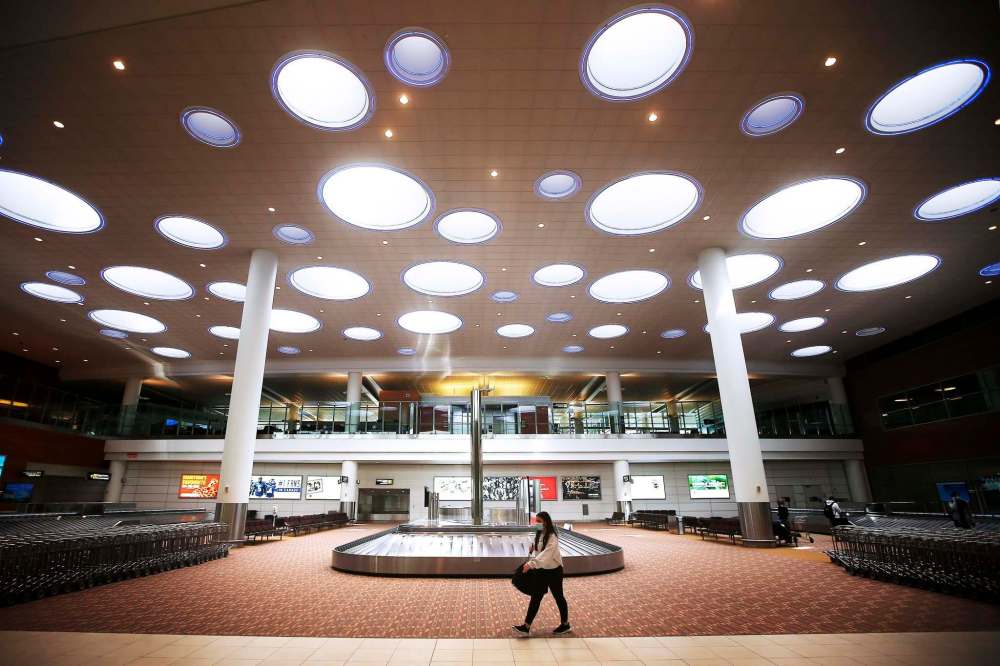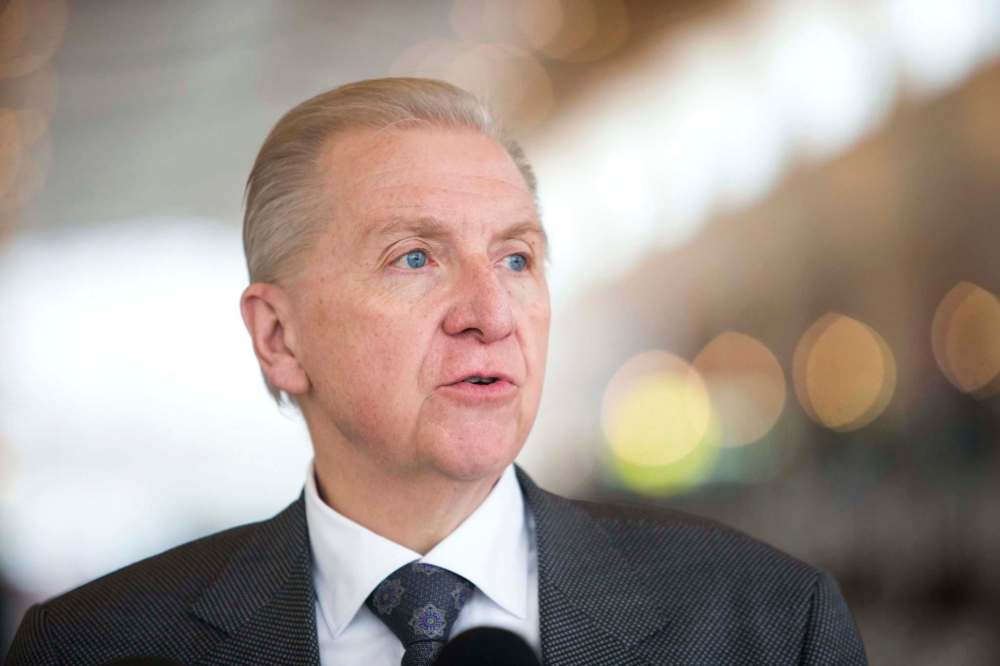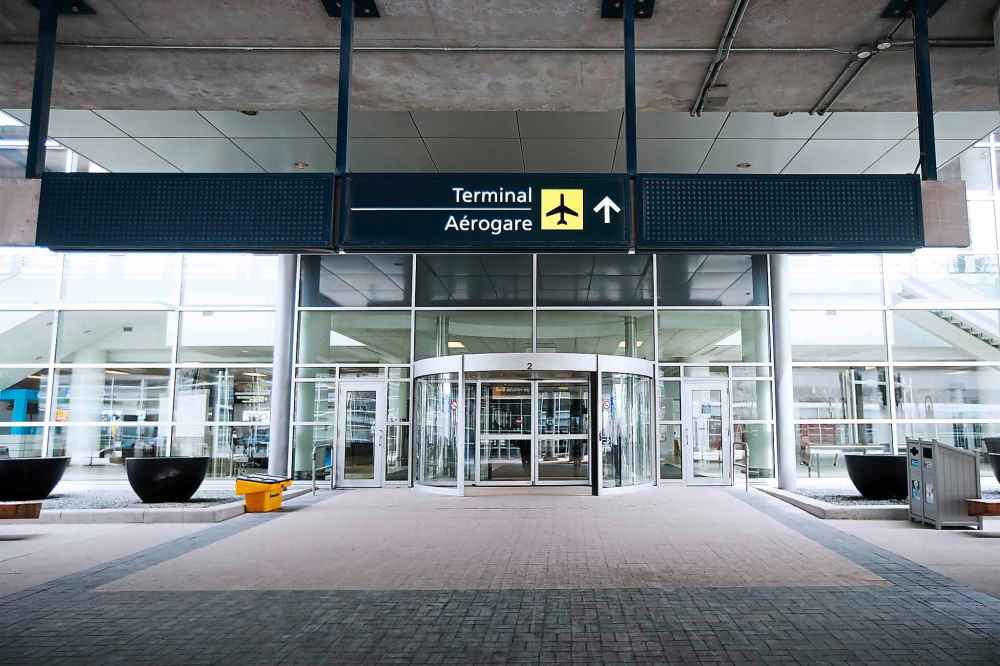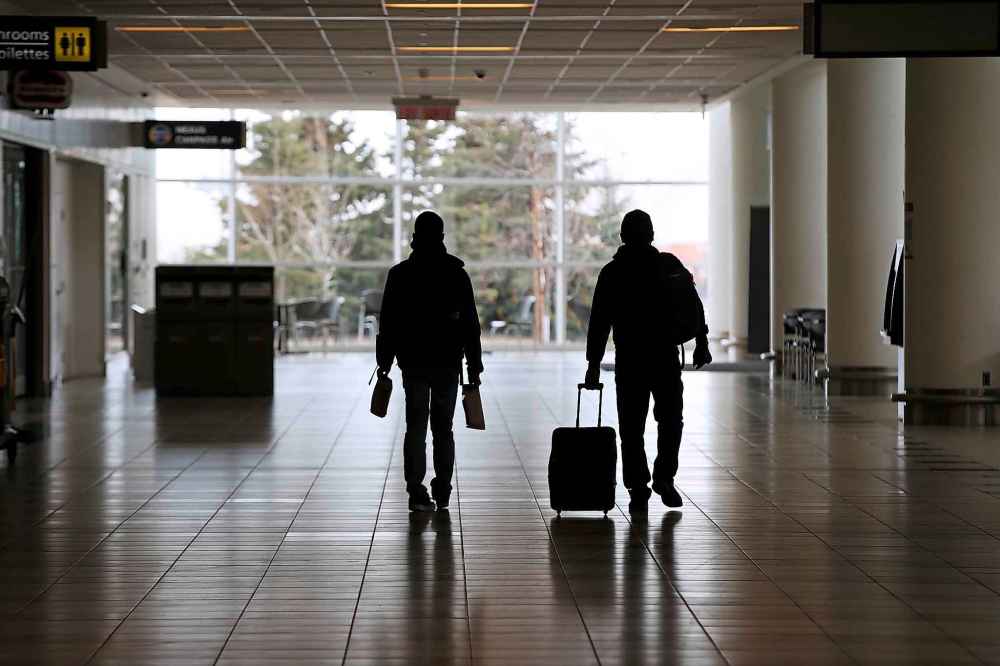Airport’s flight plan anything but clear
Long journey of recovery anticipated following COVID-19 pandemic
Advertisement
Read this article for free:
or
Already have an account? Log in here »
To continue reading, please subscribe:
Monthly Digital Subscription
$0 for the first 4 weeks*
- Enjoy unlimited reading on winnipegfreepress.com
- Read the E-Edition, our digital replica newspaper
- Access News Break, our award-winning app
- Play interactive puzzles
*No charge for 4 weeks then price increases to the regular rate of $19.00 plus GST every four weeks. Offer available to new and qualified returning subscribers only. Cancel any time.
Monthly Digital Subscription
$4.75/week*
- Enjoy unlimited reading on winnipegfreepress.com
- Read the E-Edition, our digital replica newspaper
- Access News Break, our award-winning app
- Play interactive puzzles
*Billed as $19 plus GST every four weeks. Cancel any time.
To continue reading, please subscribe:
Add Free Press access to your Brandon Sun subscription for only an additional
$1 for the first 4 weeks*
*Your next subscription payment will increase by $1.00 and you will be charged $16.99 plus GST for four weeks. After four weeks, your payment will increase to $23.99 plus GST every four weeks.
Read unlimited articles for free today:
or
Already have an account? Log in here »
Hey there, time traveller!
This article was published 26/04/2020 (2055 days ago), so information in it may no longer be current.
The signs are everywhere now, at the Winnipeg James Armstrong Richardson International Airport. There are signs on the doors, on the floors, on the columns that rise over a mostly motionless terminal. Signs telling people to stand six feet apart, and wear masks when they travel, and self-isolate for 14 days when they land.
At the foot of the arrival stairs, the famous blue Hug Rug is gone; in its place, a social-distancing guide lies instead.
So many signs have bloomed here since the pandemic began, that airport staff have taken to joking that there are more signs than people. It’s a punchline that stings because it’s so literal: on Saturday, just 72 passengers were expected to pass through the airport. The next day, about noon, just two stood waiting to check in.
The airport is quiet on this Sunday afternoon, as it has been for weeks since the pandemic began. Gone is the low thunder of suitcase wheels on floors; gone are the buzzing voices bidding goodbye or hello. There is only soft music, punctuated every few minutes by a bilingual recording reminding folks to practise social distancing.
This is not the world we knew. Of all the images that testify to how deeply the pandemic has shaken our way of life, few are more haunting than that of a place dedicated to movement, now frozen still. It’s a surreal scene, a profound disconnection: here are runways longing for planes, here is a terminal without passengers.

Barry Rempel feels this grief too. One day late last week, the Winnipeg Airports Authority CEO walked through the ghost town the terminal has become. As he passed by restaurants with chairs piled on tables and kiosks gone dark, he thought about the people who would be there, had their jobs not been so suddenly lost.
“To say that I was a little misty would have been an understatement,” Rempel says, over the phone from his home office Saturday morning. “All I could think about were all the people that I used to see in the terminal every day. These are people that you are just happy have employment, and now you’re looking at empty space.”
In more than 30 years in and around the aviation industry, Rempel has never seen anything quite like this. There is no precedent, and no easy comparison: it’s almost as if someone combined the sudden air travel halt that followed Sept. 11, 2001, he says, with the long and deep economic trough of the 2008 financial crisis.
The bittersweet pill is that before all this happened, the year had been going relatively well. Through the first quarter of 2020, passenger traffic was up 4 per cent over the same period in 2019, a year which saw 4.5 million passengers stream through the airport’s gates; the WAA was working on plans for an eventual terminal expansion.
Within days in mid-March, that traffic collapsed by up to 97 per cent, from an average of nearly 12,500 passengers a day to a current figure of about 200. Now, the airport projects to see 1.5 million passengers in total through 2020, and while it’s hard to say what 2021 will look like, the WAA is planning for a long-lasting recession.

This poses a steep challenge. Many businesses have been deeply damaged by the pandemic, but most of those don’t have to find ways to survive while also running an entire airport. The WAA has no such option: the runways have to stay open, whether there are only a handful of planes taking off each day, or dozens.
To try and curtail costs, the entire U.S. section of the terminal is now closed, along with about half of its gates. The main luggage belt is stopped, with only the oversized belt now running; the airport even turned off the electric signs that tell drivers how many spots are left in the parkade, because don’t worry, there are plenty.
For now, Rempel says, they are managing. In recent years, the WAA had squirreled away cash for its anticipated terminal expansion, as well as a key $80-million cold storage cargo facility which enables shipping certain goods such as pork or pharmaceuticals; currently, the closest such facility is in Chicago.
Now, Rempel says, that money is being used to pay staff and help keep the runways open. Combined with other sources of cash,and based on updated projections, Rempel says the WAA will be able to continue through 2020 without having to take “more draconian” measures to cut its expenses.

The downside, he adds, is that when the economy begins to move forward from the pandemic, it will need precisely the kind of infrastructure the WAA was hoping to build with the money it’s now tapping to keep its operations flowing.
“We have to find a way to help the federal government, in our case, understand that we’re probably even more impacted as an airport than an airline might be,” he says. “All the money we’re spending right now is money that’s intended to build community infrastructure.”
Other challenges are looming. The current terminal was built in part through a $600-million bond offering, which are paid through an airport improvement fee levied on airfare; keeping up with those payments won’t be an “immediate” difficulty, Rempel says, but the WAA has been having constructive discussion with banks on that topic.
There is one flash of good news: the airport’s cargo business is actually up since before the pandemic, bolstered by surges in online shopping and government procurements of health supplies, such as ventilators or pharmaceuticals. Last week, a Boeing 777 from Shanghai touched down in Winnipeg, bearing a load of medical gowns.
“We have to keep the supply chain moving,” Rempel says. “Someone told me, when I first got in the airline business, that if you build a mile of road, you got a mile of road. If you build a mile of runway, you got the world… and in a place like Winnipeg, we’re a long ways from anywhere in the centre of the continent, everything’s got to come by air.”
Then there’s the long term, and it goes beyond the numbers. Just like the Sept. 11, 2001 attacks changed airport security forever, so too might the COVID-19 pandemic leave a lasting impression. Some form of social distancing measures will likely remain in place in some way well into 2021, and what happens after that?
“We’re talking about a very different way of travelling potentially,” Rempel says. “We’re just now starting as an industry to talk about protocols for how to go through security and maintain social distance… I don’t want to say things will go back to the way they were, because they probably never will in some way.”
Above all, Rempel says, he wants the public to know that the airport is still open for business in the way Manitoba needs to keep going, even if that business is anything but normal. What happens next will remain to be seen, but even while the terminal blooms with more signs than people, its front-line workers are getting the job done.
“We have an awesome group of people at the airport that are working really hard to try and make sure that our facilities and the connectivity we need to get through this are maintained,” Rempel says. “There will be a sunrise. I was telling our team the other day that working together, we’re going to pull back the curtain.”
melissa.martin@freepress.mb.ca

Our newsroom depends on a growing audience of readers to power our journalism. If you are not a paid reader, please consider becoming a subscriber.
Our newsroom depends on its audience of readers to power our journalism. Thank you for your support.



